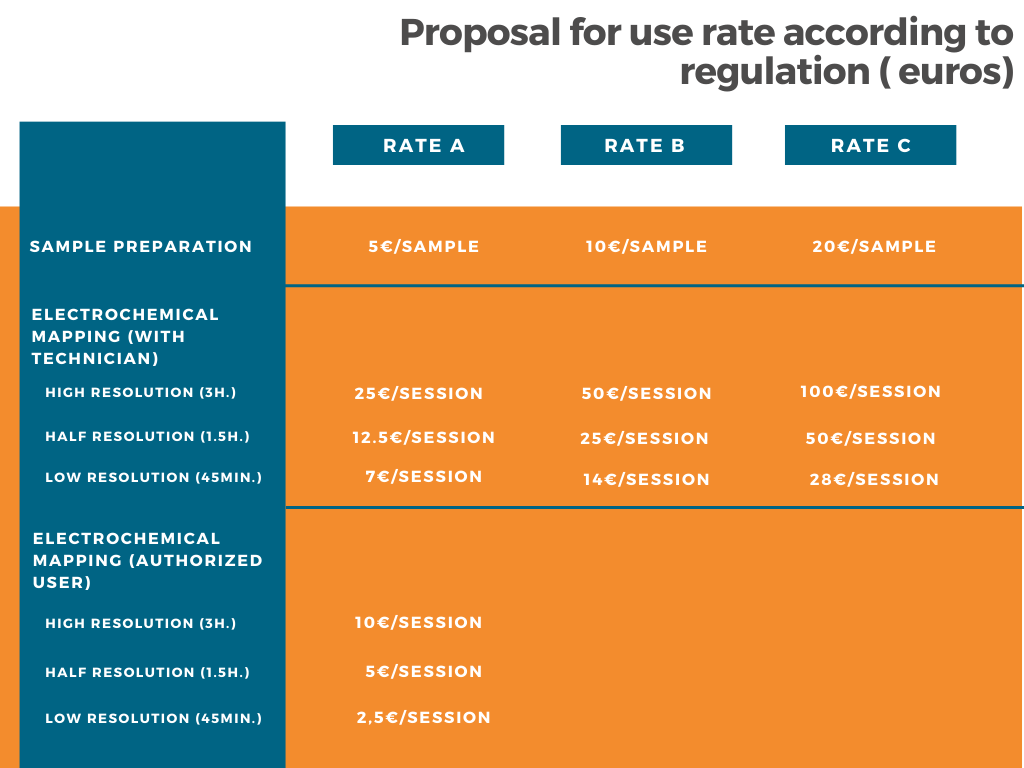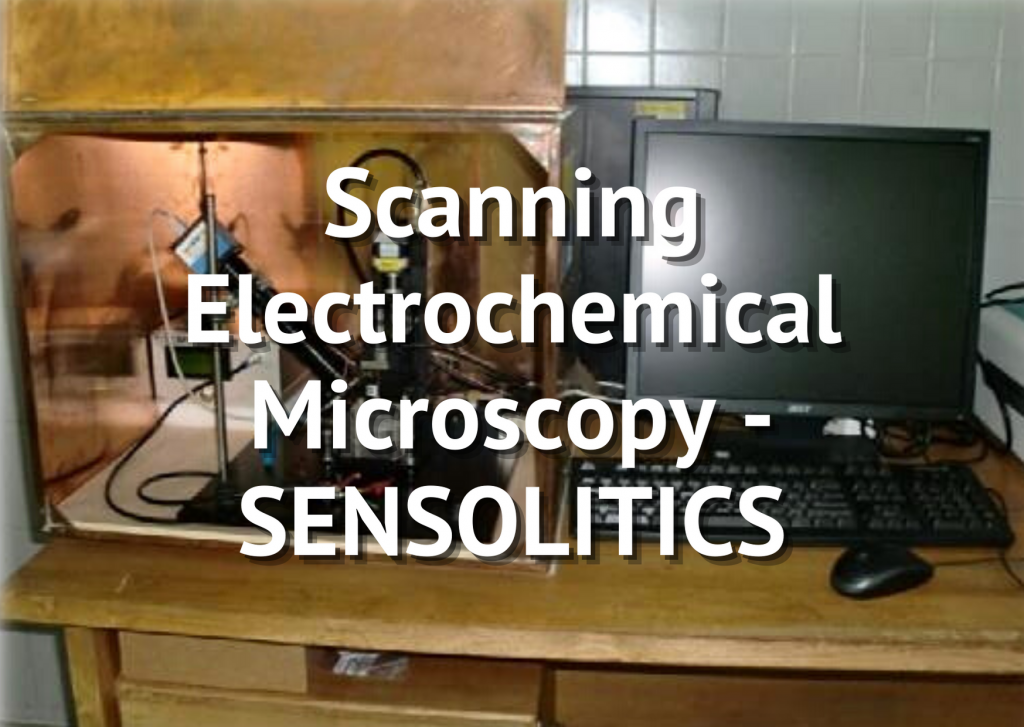Description of the infrastructure:
Multifunctional electrochemical equipment for applications in the field of nanotechnology.
It was acquired in the call: FEDER 2008 – 2011.
Code: UNCA-08-IE-048.
Services currently offered and possible applications in other fields:
Scanning Electrochemical Microscopy, SECM is a very faddish and advanced electrochemical technique with wide applications in the determination of charge transfer kinetics, in-situ visualization of the topography of surfaces that are immersed in electrolytes, spatially localized variations in chemical reactivity, as well as the manufacture of microstructures in interfaces or surfaces. What distinguishes SECM from other microscopic techniques is that amperometric or potentiometric microelectrodes are used as scan probes that interact electrochemically on the sample or that act as inmobilization supports for the species to be studied.
SECM has exceptional chemical selectivity and is therefore an excellent tool for examining properties and (electro) chemical reactions that frequently occur at interfaces between two regions; the technique allows to investigate the paths and speed of such reactions with spatial resolution, which opens up the field of its applications, which are already vey numerous and continually increasing. Some examples of application possibilites are: reaction kinetics studies; visualization of the activity of immobilized enzymes on microstructures and manufactures of biosensors; redox reactions in batteries; studies of corrosion phenomenon (metal/air or metal/seawater); ions flow through cell membrane pores or monitoring of biological activity in living cells; manufacture and characterization of nanoelectrodes; studies off the pH-dependent dissolution of immobilized electronic mediators; quality control of ultramicroelectrode ensembles; apatially resolved detection of neurotransmitter secretion by individual cells; high resolution lateral deposition of polypyrrole as a medium for the construction og organic transmitters.
The equipment is made up of the following elements:
- . Basic computerized automatic scan electrochemical microscope with image quality enhanced devices using a piezoelectric positioning system and accuretely separate topographic information from electrochemical information.
- . Auxiliary potentiostat with stand, PC interface and control software.
Services offered:
– Sample preparation.
-Characterization of sample by obtaining the electrochemical map of conductive and insulating sample surfaces.

Is it necessary to use a technician: yes. Have a technician: no
Observations
Currently, the device does not have any specialized technician to handle it. However, if there is the possibility of requesting a technician, it would be convenient.
The handling of the device is not complex, but it requires a suitable training period and the handling of a series of delicate and expensive accesories (fungible). There are not many devices of thid type at the national level and, therefore, at the level of applicability and use of the same are also limited, especially in our own university. The equipment is currently not fully exploited since it has not yet been tested or used all the technical possibilities. We do not know the demand that the equipment could have, although on first impression, we estimate a relatively low demand.
The rates are indicative and should be reviewes periodically based on demand.


